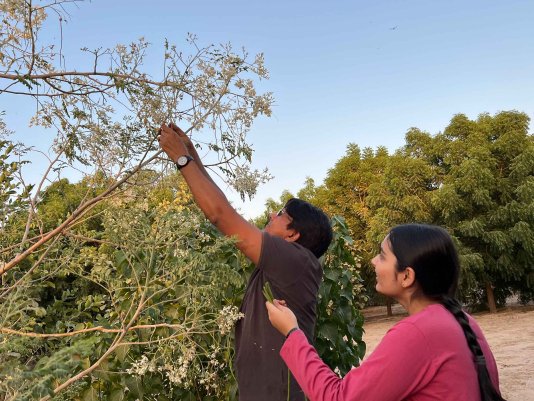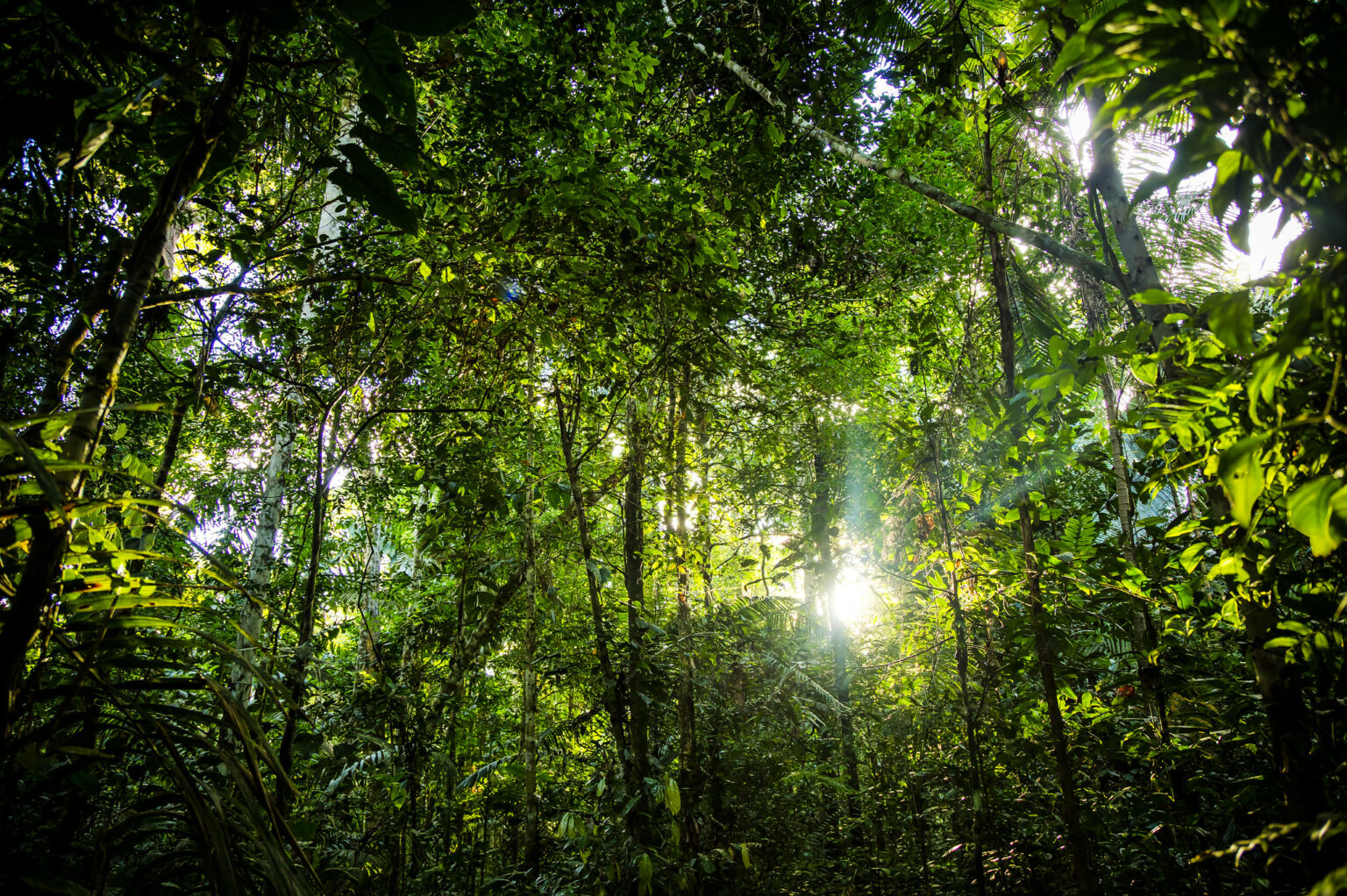- About
- Topics
- Picks
- Audio
- Story
- In-Depth
- Opinion
- News
- Donate
- Signup for our newsletterOur Editors' Best Picks.Send
Read, Debate: Engage.
| January 06, 2023 | |
|---|---|
| topic: | Climate action |
| tags: | #India, #afforestation, #deforestation, #desertification, #climate change, #food security, #caste-system |
| located: | India |
| by: | Hanan Zaffar, Jyoti Thakur |
In India's Thar desert region of Rajasthan, changing climate, soil erosion and deforestation make the quality of land the poorest in the country. Degradation of land in the dry and sandy Thar, which spans over 60 percent of the state, poses a threat not only to desert ecology but also has an impact on people’s food security and source of livelihood.
Since 2003, Shyam Sunder Jyani - a native of the region and an associate professor of Sociology, has been working towards restoring and preserving the ecosystem and biodiversity of the Thar desert through his approach of familial forestry, which aims at integrating the region’s culture and nature.
Jyani, who belongs to one of India’s marginalised caste groups, hails from a farming family in the 12 TK village in Ganganagar district - about 12 miles away from the India-Pakistan border. Worried about the menace of desertification in the region, the professor interacted with locals and eventually formed a grassroots network of villagers and youths to further the concepts of ‘Familial Forestry’ and ‘Institutional Forest,’ where trees are planted on family land and in public spaces, respectively.
The former had won him the United Nations Convention to Combat Desertification (UNCCD) Land for Life award - the world's highest award for land conservation and restoration - in June 2021.
Established in 1994, the UNCCD is the only legally binding framework that globally addresses problems related to desertification and drought.
FairPlanet spoke with professor Jyani about the challenges and triumphs of the grassroots network he established as well as his take on the concepts of familial forestry and institutional forest.
FairPlanet: Where did the idea of developing familial forestry come from? Can you take us back to the origins of this 19-year long journey?
Shyam Sunder Jyani: When I first came to Dungar college in 2003 as an assistant professor, I observed that the campus only had 10 to 15 trees left. And even those trees were dying. So in the same year, I rescued the trees with my students. And that whole exercise made me realise that this district is more arid than Ganganagar, my native district. The district lacked greenery, which doesn’t occur to our imagination when we think of Rajasthan. However, once my students and I rescued and planted some neem (Azadirachta indica) trees, I got quite keen on making the district green.
So as my subject is sociology, I first thought of taking a cue from people's mindset and understanding what people in this area really think of the environment. So, I observed that people in my area, or I think in most parts of this country, worship trees and water. They already have a semblance of connection with nature but certainly lack empathy. So I wanted to touch on that aspect and bridge the gap.
Can you talk about the concept behind Familial Forestry, how it is being implemented and at what magnitude?
With a bottom-up approach, Familial Forestry directly involves the community, especially the young people of the region. We realised that trees have a central role in the environment and domestication of trees make families sensitive towards nature and its protection. So my students and I started off with an emphasis on clubbing rituals and festivals with trees to make climate action an integral part of family and social structure. Under this concept, we promote plantation of indigenous and fruit-bearing plants at home like khejri (Prosopis cineraria), rohida (Tecomella undulata), ber (Ziziphus mauritiana), amla (Phyllanthus emblica), etc.
Native plants and trees are not just more efficient in sequestering carbon than monoculture tree plantations, but they also help reduce hunger and malnutrition as people have easy access to some amount of fruit in their regular diet.
Essentially, we started connecting people and making them understand that in a desert like ours, we can never turn a plant into a tree unless we are emotionally attached to it. For that, we must make a plant part of our family. We have to treat plants and trees as green members of our family, because family is the basic unit of our society.
On a local or village level, not every individual is aware of climate change or how it impacts them. But they certainly understand how imperative trees and lands are for them. My motive is simply to make them understand the ways in which they can conserve and preserve them.
We make frequent visits to villages and keep interacting with school students, youth, women and elderly people on a regular basis. We also provide them plantation training and post-plantation care, which adds on to their knowledge of their surrounding environment.
As of today we have planted over 3.8 million saplings in over 15,000 villages of Rajasthan. Interestingly, over 90 percent of what we plant does survive in this arid terrain.
“We must make a plant part of our family.”
What is the idea behind Institutional Forestry?
The idea behind creating an Institutional Forest is to extend the approach of Familial Forestry from house to community by developing small and medium-size forests in educational institutes and on abandoned or degraded public land.
Because we have to understand that replacing established forests with new plantations doesn't make sense, what we need to do is to restore and resuscitate the abandoned and degraded land by planting native trees. We again do this by engaging students and the local community.
We developed our first institutional forest in 2013 - Gandhi Institutional Forest - on our college campus, which now is home to 100 tree varieties with different types of desert grasses and other floral-faunal diversity.
Our largest institutional forest is 'Dev Jasnath Institutional Forest', in Lunkaransar, Bikaner district. The 80 hectare forest is a unique grassland in this area which possesses almost all varieties of native grasses, herbs and shrubs.
Earlier it was an abandoned land, deteriorated by illegal strip mining of gypsum - Rajasthan accounts for its largest deposits. I visited the area in February this year and through community participation, we rallied and organised land-walks until the local administration put a ban on mining in the forest.
Today we have around 200 forests in Bikaner and a few other districts.
Do you reckon the Familial Forestry approach can be applied outside Thar desert?
Yes, it is being applied in other 33 southern and eastern districts of Rajasthan. Desert is only limited to the western area and its 12 districts of the state. Some years back, people from different states started reaching out to me on social media platforms. They were curious about what familial forestry is and how they can implement it in their region. So I started responding to their queries on a personal level. In some cases, I also delivered seeds to farmers in Madhya Pradesh, Punjab, Haryana and other north Indian states.
As per my information, the concept is being replicated in seven other states of India after 2017.
As far as outside country implementation is concerned, the United Kingdom and Canada have a familial forestry chapter – meaning individuals forming groups and applying this idea in their respective regions. These collectives usually share their efforts to rescue plants on Facebook and Twitter.
Even my students who live in different parts of the country have been making an attempt to implement this idea in their locality. Because the idea of familial forestry is not to just plant trees, but also to evoke consciousness within families and create discourses on the environment and make people sensible towards it.
As a member of one of the most marginalised caste groups, what are the hurdles you have encountered along the way?
When I was studying in Jaipur, people from my community were not given rooms for rent because our caste was deemed synonymous for criminals. So I have come a long way in terms of my education and the work that I do.
However, when I had begun the tree plantation on my campus, I faced huge backlash from many upper caste teachers, who undoubtedly were more in number. They used to say that 'I'm doing this to grab the college land.' Even in Lunkaransar, the mining was backed by a dominant caste group and it's well understood that no illegal mining can take place without local support.
However, what really helped or rather saved me is the students' support. These students come from OBC (Other Backward Classes – socially and educationally backward classes) and Scheduled Caste (SC) communities.
That being said, neither my project nor I have ever received any kind of support from the authorities, which makes my job more difficult.
After the Lunkaransar drive, I started receiving threats on WhatsApp and calls. Even in terms of funds, it has been my own earnings that I have invested for years in buying seeds, saplings and conducting training sessions etc. But to say that it has no support from people, even financially, would be a lie.
As you mentioned, you spend your earnings on this project. Why are you doing this and what inspires you to keep at it?
The biggest challenge today, in my understanding, that human lives encounter is the loss of habitable character on earth. Undoubtedly, the future survival in the coming years is going to be quite difficult, if we don’t act now on it. Because in times like this, it becomes our moral responsibility to do our bit, take measures which are in our capacity.
So when I got a permanent job, I realised that I have the means and privilege and I must contribute. I come from a farmer’s family so the affection towards land and trees came naturally to me. Moreover, my sociology background helped me understand the significance of ideas. Therefore, I developed this idea so that it could transcend and not get restricted to my knowledge and understanding.
Initially, when I had started, I had never imagined that this idea would take such a form and become the caravan as it is now. Honestly, my plan was to give a few years to this and after that I had thought of leaving it to public support with my little contribution.
But earlier when we managed to stop gypsum mining in Lunkaransar and eventually rejuvenated the entire land, I could sense the profundity of people’s faith in me and their pursuit towards this cause during this process. We raised around 1cr through crowd funding which helped in getting the entire land area fenced. It has become quite a sight now. So, I feel - and I discussed this with my family members as well - that if I stop now, it would be an injustice to the cause and the idea.
Image by Shyam Sunder Jyani.
By copying the embed code below, you agree to adhere to our republishing guidelines.



